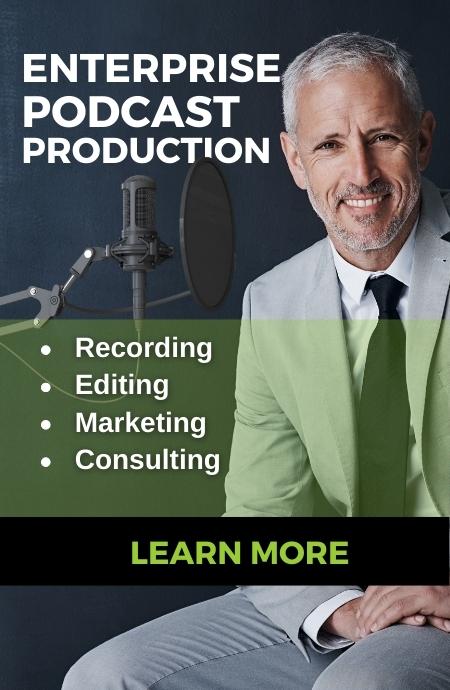Video-first content marketing is a strategy that leads with the creation of video content first and then using that video content to derive all other forms of content. E-books, case studies, whitepapers, articles, and blogs still play an important role in content marketing. However, once we acknowledge the reality of today’s market and the multi-use fruitfulness of video, we begin to realize the tremendous value of a video-first content marketing approach.
When deciding on the best content marketing strategy for your company, one of the first things to figure out is the type of content you’ll use. Should you write a long-form blog articles, create podcast audio, or create videos?
While all of those are great options, you should prioritize video because video content marketing engages the audience through word, sound, and visuals simultaneously. To succeed, you must think multi-dimensionally, and nothing serves this purpose better than video. Almost 90% of video marketers utilize the power of video content, while 85% of U.S. Internet users watch videos online.
People process video 60,000 times faster than text because it requires less cognitive effort and shorter attention span. When reading or listening to words our mental structures need to create thoughts about that content. With video, this is all done for us.
This results in the fact that more and more people prefer consuming video content rather than reading it, so it makes perfect sense to start with video. But it doesn’t stop there…
Remixing Video Into Multiple Content Forms
The best thing about video is that it can be broken down and transformed into many different content formats such as long-form articles, web page content, social posts, podcast audio, still images, and GIFs that can be shared across other channels.
Because it has a script with slight modification it can become a written piece. The still frames of a video can be captured as images that can be added to written posts or shared across social media. And because it has audio, you can alter it for podcast use. Here is further explanation of how to remix video content:
1. Blog posts
Blogging is still among the most important content strategies. A keyword enriched and in-depth blog post that engages the reader is what Google’s algorithm recognizes as relevant; pushing your site up in the rankings.
Utilizing video to create your blogs won’t require as much research, writing, or editing. Just transcribe the video, edit the text, and add visuals, quotes, and stats. If it’s too long, this is a plus! You can break it into a blog post series.
2. Web Page Content
Video interviews on topics surrounding your product or service will provide new angles, descriptions, and quotes to help update your web page content. Whether you are creating new pages from video key points or using the fresh video context to update existing pages, video can provide new life to your website static pages.
3. Podcasts
According to a 2018 article by FastCompany, there are more than 500,000 active podcast shows and over 18 million episodes. The number of podcast listeners is growing, and marketers are capitalizing on the format. Converting videos into podcasts will cut your content creation effort and time tremendously.
After cutting the unnecessary bits and adding an intro and outro, you audio is ready to be uploaded to your podcast host for distribution. Each time you upload a video, follow up with a podcast version to build a presence with both formats.
4. Infographics
Infographics are easy-to-digest, linkable, and a great way to tell visual stories. They also generate tons of social shares, which is why the demand for them has drastically increased in the last few years.
Because they have the potential to go viral and are very easy to create, infographics are a way to boost engagement and build your brand awareness. Take the story from your video, write down key points, quotes, and stats, and you’ll have an outline for an infographic in no time. If you’re not savvy with graphic design yourself, hire someone to breathe life into your infographics.
5. Social Media Images and GIFs
Social posts take on a new life with images. Take the best frames from your video to add photo images to your social posts.
Use quotes from the candid conversation or interview in your video for short posts like twitter or medium size posts for Facebook or Linkedin. Along with those post include images or create humorous GIFs from the video to attract more attention and engagement.
Additional Benefits Video-First Content Marketing
People consume videos on a daily basis, whether it’s looking for DIY instructions, doing research, or sharing funny videos with friends. They find video to be the most useful, engaging, and easy-to-consume format. As the content creator, there are many more benefits to you for creating video including:
1. It lends you to better mobile marketing
There is a great emphasis on mobile-first marketing while simultaneously video is the most consumed mobile content. When video is optimized for mobile and social media all the values of mobile-first marketing are applied. While on the go, people would rather watch (or listen to) a video, so adding it to your content marketing strategy will give your brand a competitive advantage.
2. Video-First is good for SEO
SEO is a potent tactic for building website traffic because of Google and YouTube. These two are the biggest search engines in the world.
YouTube is a video platform that supports independent businesses and content creators, so creating engaging videos and optimizing them for search engines allows you to reach your target audience, boost online visibility, and increase your website traffic. Although Google owns YouTube meaning that it has an incentive to rank your videos higher in its search engine result pages (SERPs), video on other hosts also tend to rank higher in results that basic text content.
3. It is a native format for future generations of consumers
Gen Zers are known as video natives because they watch a lot of video on social networks and YouTube. By learning how to create great videos, you’ll be ready to reach them when they grow to become adults prepared to spend. It is expected that video will make up 81% of global online traffic by 2021.
4. Video-First Marketing Enables Efficient Social Content Creation
By repurposing your lengthy videos into bite-sized pieces for social media, you won’t have to spend as much time on creating everything from scratch. Many marketers say that they would create more social media-friendly videos if they had the time and resources.
Here are some examples and tips that you can try:
- Cut up the footage into relevant pieces where different topics are discussed.
- Use your video content to create a series of shorter videos. For example, if you’re talking about the basics of SEO discussing the seven pillars of a successful SEO campaign, you could cut the video into seven parts or use the content to produce seven videos and explain those pillars individually. Add a short intro and outro to all of them, and link to the original video, and a few questions for the audience asking them about their SEO experiences and tactics.
- Ask someone from your team to shoot a video of you shooting your video, and create a behind-the-scenes material of your longer videos. You can include bloopers and funny parts, and share them on your social media.
Conclusion
A Video-First Content strategy is a smart move that will increase your efficiency, effectiveness, and overall output in your quantity of content. Content quality increases due to the natural and original nature of video content.
Developing video with repurposing in mind from the start will make things easier for you when it comes to transforming the video into other forms of content later. But even if you don’t have that pre-production plan, there will always be an element of your video that can be cut and repurposed into other content formats. And remember – video is the content that keeps on giving.
Want to learn more? Talk to a professional Content Monsta!
- AI + Human Powered Content Marketing: Speed Without the AI SlopFAST, CHEAP, and GOOD. You can have them all. Speed keeps …
- How to Measure Content Marketing ROIContent marketing ROI is often miscalculated because it is based on …
- Why Pay for Remote Video ProductionIf you already have someone on your team who can edit …








